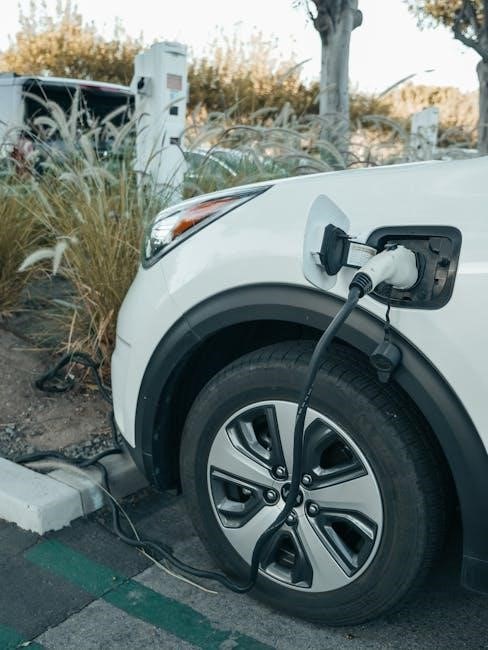Manual battery chargers for electrolysis are necessary for effective rust removal, using a
- list of requirements
including power supply and continuous current output to achieve desired results quickly and efficiently always online.

Overview of Electrolysis Process
The electrolysis process involves the use of an electric current to drive a chemical reaction, typically to remove rust or corrosion from metal surfaces. This process requires a power supply, such as a manual battery charger, to provide the necessary current. The electrolysis tank is filled with a solution, such as water and a rust inhibitor, and the metal object is submerged in the solution. The manual battery charger is then connected to the tank, providing the electric current that drives the chemical reaction. The reaction breaks down the rust and corrosion, allowing it to be removed from the metal surface. The electrolysis process can be used to restore metal objects to their original condition, and is often used in industrial and commercial settings. The process is relatively simple, but requires careful control of the electric current and the solution to ensure effective and safe operation.
Importance of Manual Chargers in Electrolysis
Manual chargers play a crucial role in the electrolysis process, as they provide the necessary power to drive the chemical reaction. Unlike automatic chargers, manual chargers can provide a continuous current output, which is essential for effective electrolysis. The manual charger allows for control over the current and voltage, enabling the user to adjust the settings to suit the specific needs of the electrolysis process. This level of control is not possible with automatic chargers, which can shut off or adjust the current output based on their own programming. As a result, manual chargers are preferred for electrolysis, as they provide the reliability and consistency needed for effective and safe operation. The use of a manual charger also helps to prevent damage to the electrolysis tank and the metal object being treated, by allowing for careful control of the electric current.

Characteristics of Manual Battery Chargers
Manual battery chargers have specific characteristics, including
- reliable
and efficient power output, suitable for electrolysis applications always using electronic devices.
Power Requirements for Electrolysis
The power requirements for electrolysis are crucial to achieve effective results, and a manual battery charger must be able to supply sufficient power to the electrolysis tank. According to various sources, a charger with a high continuous current output is necessary for faster cleaning cycles. For example, a charger that runs at nearly 10 amp continuous can make a significant difference in the efficiency of the electrolysis process. It is essential to choose a manual battery charger that can provide the required power output to ensure optimal performance. The charger’s ability to supply a consistent flow of electricity is vital to the success of the electrolysis process, and a manual charger with adjustable settings can be beneficial in fine-tuning the power output to suit specific needs. By selecting a suitable manual battery charger, users can ensure a reliable and efficient electrolysis process. Manual battery chargers are widely available and can be used for electrolysis.
Continuous Current Output for Faster Cleaning
A manual battery charger with a continuous current output is essential for faster cleaning cycles in electrolysis. The charger’s ability to provide a consistent flow of electricity enables the electrolysis process to occur more efficiently. A higher continuous current output, such as 10 amps, can significantly reduce the time required for cleaning. This is because the increased current output enables the electrolysis process to occur at a faster rate, resulting in quicker removal of rust and other impurities. By using a manual battery charger with a high continuous current output, users can achieve faster and more effective cleaning results. The continuous current output of a manual battery charger is a critical factor in determining its suitability for electrolysis applications. A charger with a high continuous current output can provide a more efficient and effective cleaning process, making it an essential consideration for users. Manual battery chargers with adjustable current output settings can also be beneficial.

Choosing the Right Manual Charger
Manual chargers require careful selection for electrolysis, considering factors like power output and compatibility with the electrolysis system always and using a specific list of requirements online every time.
Old Fashioned Manual Chargers for Electrolysis
Old fashioned manual chargers are often preferred for electrolysis due to their simplicity and ability to provide a continuous current output. These chargers can be found at affordable prices, with some options available at retail stores like Walmart for around $30. The key benefit of old fashioned manual chargers is that they do not have the smart technology that can interfere with the electrolysis process. Unlike automatic chargers, old fashioned manual chargers do not shut off when they detect a charged battery, allowing for uninterrupted use. This makes them ideal for electrolysis applications where a steady power supply is necessary. Additionally, old fashioned manual chargers are often more reliable and less prone to damage from continuous use, making them a popular choice among those who regularly use electrolysis for rust removal or other purposes. They are a cost-effective solution for electrolysis needs.
Avoiding Automatic Chargers for Electrolysis
Automatic chargers are not suitable for electrolysis due to their built-in safety features that can interfere with the process. These chargers are designed to detect when a battery is fully charged and will automatically shut off, which can disrupt the electrolysis process. In electrolysis, a continuous current output is necessary to achieve the desired results, and automatic chargers cannot provide this. The automatic shut-off feature can cause the charger to mistakenly identify the electrolysis circuit as a charged battery, leading to premature shut-off. This can be frustrating and waste time, making it essential to avoid using automatic chargers for electrolysis. Instead, manual chargers without smart technology are preferred, as they can provide a steady power supply without interruption. By avoiding automatic chargers, users can ensure a more efficient and effective electrolysis process, which is critical for achieving optimal results in rust removal and other applications. Manual chargers are the better choice for electrolysis.

Alternative Power Supplies for Electrolysis
Using 12V batteries or converting old chargers can be viable alternatives for electrolysis power supply needs always available online easily.
Using 12V Batteries for Electrolysis
Using 12V batteries for electrolysis is a viable option, as they can provide the necessary power supply for the process. Many people have reported success with using 12V batteries to power their electrolysis systems. The benefits of using 12V batteries include their widespread availability and relatively low cost. Additionally, 12V batteries can be easily connected to the electrolysis system, making it a convenient option. It is also possible to use multiple 12V batteries in series to increase the voltage and power output. Overall, using 12V batteries for electrolysis can be a simple and effective solution for those looking for an alternative power supply. With the right setup and configuration, 12V batteries can provide a reliable and efficient power source for electrolysis. This option is worth considering for those who want to try electrolysis without investing in a dedicated power supply.
Converting Other Chargers for Electrolysis Use
Converting other chargers for electrolysis use can be a cost-effective and creative solution. Some people have reported success with modifying phone chargers, rechargeable torch chargers, and other types of chargers to work with their electrolysis systems. This can be done by bypassing the charger’s automatic shut-off feature and configuring the output to match the requirements of the electrolysis system. However, it is essential to exercise caution when attempting to convert other chargers, as it can be potentially hazardous if not done correctly. It is crucial to ensure that the converted charger can provide a stable and consistent power output to avoid damaging the electrolysis system or causing injury. With the right knowledge and expertise, converting other chargers can be a viable option for those looking to repurpose existing equipment and reduce waste. This approach requires careful planning and attention to detail to achieve a safe and effective conversion.



